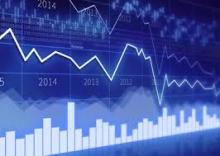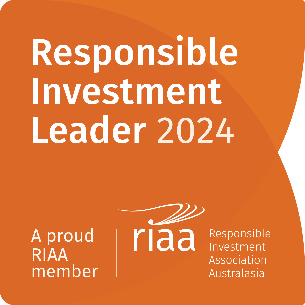Where to from here?

Over the past two months, we have written a number of commentaries with a view that equity markets would likely rally. They have. This has been an extraordinary time for everyone with respect to both concerns over the health implications from COVID and also the enormous disruptions to our everyday life and commerce. The consensus view was that investment markets would face a challenging future but, ultimately, they have behaved, with an efficiency that should give investors confidence. The question, as always, is where to from here?
On March 23rd, equity markets around the world completed their one month COVID crash. In what was amongst the most violent price corrections that we have ever seen, the NZX50 Index found itself 30% lower whilst in Australia the ASX200 plummeted 36% from its recent high on February 21st. The explanation for such panic was understandable. In the face of the coronavirus, governments, businesses and households were all faced with an extreme level of fear and uncertainty. The social response to this, as introduced by governments everywhere, was one of containment. Businesses and schools were shut down and social distancing became a concept that we became all too familiar with. This approach was blunt but certainly effective from a health perspective. What was far less certain was what the impact would be on the broader economy and by virtue of it, the performance of stocks.
As unemployment rates soared to levels not seen since the Great Depression of the 1930’s, a consensus view formed across many financial commentators that the medium-term prospects for risk assets, such as equities, was challenged. But this hasn’t proven to be the case. Against this backdrop of uncertainty, stock markets have roared back to life. Since their lows in late March the NZX50 has rallied over 30% and the Australian ASX200 is up 27%. What the bearish consensus did not sufficiently recognize was the speed and magnitude of the policy support from central banks and governments, and its implications for the economic cycle. Although much of what we have just been through with COVID is unique, what has been instrumental in resuscitating markets was our experiences from 10-years ago in the GFC. Having that playbook close to hand ensured that policy makers understood the importance of moving quickly and erring on the side of excess. We now live in a world where interest rates across Developed Markets are essentially zero and fiscal deficits are so large that they are being referenced to those produced in World War II. There will come a day when these measures invoke troubles of their own, but that is not the battle we face today.
When we consider the prospects for equities, we believe it is important to recognize different timeframes in developing that view. Ultimately this identifies a different set of drivers in the performance of shares over the next twelve months versus the next 5 to 10 years. At the risk of over-simplifying our assessment for the longer-term, we would suggest that one factor will continue to outweigh all others. That factor is interest rates. Central banks recognized, in March and April, the potential for economic catastrophe, and they reacted. Their response has been substantial, and it has not been limited to traditional scope by simply slashing interest rates. Instead they have globally utilized unconventional tools to ensure that the financial system, and by virtue of it, the real economy will be protected. Their commitment is to maintain this support until we see a credible shift back towards full employment. That will take years and during this time benchmark interest rates will be anchored at close to zero or even negative in many jurisdictions. The frustrations that existed for investors after the GFC, as they looked to allocate their capital between fixed interest opportunities and equities will continue. At a time when the requirement for income and capital growth are as important as ever, the relative return potential from owning shares will support their demand for the foreseeable future.
The shorter-term prognosis for stocks is more difficult to predict and the range of short-term outcomes is large. There is an unavoidable randomness to prices over this timeframe, but directionally we believe that there are supportive influences at play. Primarily, it is important to acknowledge that the recent recovery seen in share prices is consistent with history. The dislocation between the direction of markets and economic growth is a stage that occurs in every cycle and it is supported by reason. Despite the growth challenges that exist in every recession, investors inevitably reach a point where they recognize a foreseeable trough and recovery. And at this point, shares will begin a process of looking through the short-term challenges and focusing on the earnings and cashflow that companies will enjoy when the cycle normalizes. This is exactly what has happened this time. As countries have begun the process of re-opening, and as businesses have leveraged off government and central bank support, investors have started buying. Although the economic headlines remain severe, the underlying trends are improving. A simple visit to your local Westfield shopping mall, will show you just how determined people are to move forward. Corporate earnings will follow this lead.
Other factors that could positively impact prices over the next few months include the fact that the majority of investors globally remain of the view that markets are more likely to fall than to rise. The consequence of this cautious “group view” is that there remains an above average level of cash being held, and portfolios are already defensively positioned. This means that much of the potential selling that could occur has already happened and if markets continue to rise then these same investors must, at some point, be compelled to buy. The concept of mean reversion exists within markets and the influence of this portfolio rebalancing can have a meaningful effect.
Of course, there remains risks to this positive thesis. The potential for a second wave of infections is real but so is the likelihood that governments around the world will be substantially better prepared, this time, to deal with such an event. The strategy being employed in Germany, where a more localized approach to closing down activity in those specific areas where new clusters emerge, is evidence of this. The days of full-country lockdown appear to be behind us. Other risks such as a potential trade war between the US and China is also worth monitoring but such an event needs to be given the appropriate context. Globally we have just weathered the human and economic shock of a pandemic and the most draconian supply-side response that we have ever seen. We should take comfort from the clear commitment by central banks and governments to do whatever it takes to protect jobs and the economy, even if some of these policies could cause more significant problems in the longer-term. Stock markets will remain volatile, but more importantly in a world where the alternative for your investible dollar is a zero-interest rate, the platform for the continued performance of good quality shares is real.





